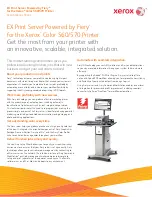
5-41
Cisco SCE 8000 10GBE Software Configuration Guide
OL-30621-02
Chapter 5 Configuring the Management Interface and Security
Configuring and Managing the SNMP Interface
Configuring and Managing the SNMP Interface
•
About the SNMP Interface, page 5-41
•
Enabling the SNMP Interface, page 5-45
•
Configuring SNMP Community Strings, page 5-45
•
Configuring SNMP Notifications, page 5-47
About the SNMP Interface
This section explains how to configure the SNMP agent parameters. It also provides a brief overview of
SNMP notifications and relevant CLI commands.
•
•
Security Considerations, page 5-42
•
•
•
Configuration via SNMP, page 5-44
SNMP Protocol
SNMP (Simple Network Management Protocol) is a set of protocols for managing complex networks.
SNMP works by sending messages, called protocol data units (PDUs), to different parts of a network.
SNMP-compliant devices, called agents, store data about themselves in Management Information Bases
(MIBs) and return this data to the SNMP requesters.
Cisco SCE platform supports the original SNMP protocol (also known as SNMPv1), Community-based
SNMPv2 (also known as SNMPv2C), and SNMPv3.
•
SNMPv1
—Is the first version of the Simple Network Management Protocol, as defined in RFCs
1155 and 1157, and is a full Internet standard. SNMPv1 uses a community-based form of security.
•
SNMPv2c
—The revised version of SNMPv1, includes improvements to SNMPv1 in the areas of
protocol packet types, transport mappings, and MIB structure elements but using the existing
SNMPv1 administration structure. It is defined in RFC 1901, RFC 1905, and RFC 1906.
•
SNMPv3
—This version mainly addresses the deficiencies related to security and administration.
SNMPv3 indroduced advanced security features that split the authentication and authorization into
two separate functions. The User-based Security Model (USM) is the default security model. USM
and its attributes are described in RFC 2574.
Cisco SCE platform implementation of SNMP supports all MIB II variables, as described in RFC 1213,
and defines the SNMP traps using the guidelines described in RFC 1215.
The SNMPv1, SNMPv2C, and SNMPv3 specifications define the following basic operations that are
supported by Cisco SCE platform.
lists the request types and descriptions.
















































